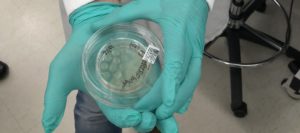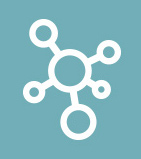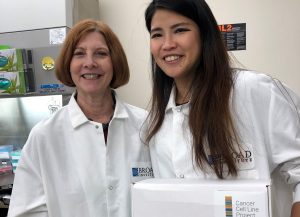NETRF & Broad Institute Work to Fill Research Void
The lack of publicly available, reliable NET cell lines is a barrier in neuroendocrine tumor research, and a new collaborative program between the Neuroendocrine Tumor Research Foundation and Broad Institute of MIT and Harvard University aims to change that.
Cell lines are used as a laboratory model to understand the genomics of tumors, test drugs for effectiveness, and identify vulnerabilities to kill cancer cells. They are fundamental research tools used in every type of cancer research. The lack of reliable NET cell lines holds back meaningful research in this rare tumor type.
The NETRF/Broad Institute Cell Line Project aims to create publicly available tumor cell lines to be shared with any researcher, in any laboratory, anywhere in the world. This project is a new approach to a problem NETRF has been trying to solve. Having a reliable NET cell line could expedite our molecular understanding of NETs and accelerate drug testing.
Innovative solution for longstanding problem
The Broad Institute has developed a Cancer Cell Line Factory over the past five years, using the latest technology to grow patient tumor samples into cancer cell lines, including some rare cancers. Researchers at the Broad will apply what they have learned to the task of developing neuroendocrine cell lines.
“This new collaboration with the Broad is an ongoing partnership to provide the sustained resources needed to make the project a success,” said Elyse Gellerman, NETRF Chief Executive Officer. “To create a viable, verifiable NET cell line, a laboratory needs financial support and ongoing tumor tissue donations. NETRF is grateful to the Sharon Levine Foundation for its support of this important effort.”
“We are thrilled about this new partnership,” said Jesse Boehm, Scientific Director of the Broad’s Dependency Map Initiative. “For years the absence of NET cell models has hampered translational research. With this new effort, we’re empowering patients anywhere to donate living pieces of their tumors to help us crack this historically challenging problem.”
NET tissue samples needed
NETRF and pattern.org have been working to collect initial neuroendocrine tissue samples. Samples already submitted include lung NETs, pNETs, and intestinal NETs. The goal is to collect as many as 18 high quality tumor tissue samples to enable Broad researchers to work towards creating cell lines for six NET types. The current phase of the project partners with patients in the U.S. and Canada to obtain excess tumor tissue from surgeries and biopsies to create NET cell lines.
Why the Broad Institute?
Gellerman is confident that the Broad is up to the task as an interdisciplinary research institute that focuses on cancer genomic analysis, interpretation, and mapping. Broad Institute has successfully created more than 300 cancer cell lines, including over 40 for rare cancers. “A project of this scale not only needs advanced DNA and RNA sequencing but vast screening libraries and sophisticated data processing to analyze and interpret the almost limitless data generated during sequencing,” said Gellerman.
How do you create a NET cell line?
Researchers at the Broad will use a structured, scientific approach to develop and  grow the cell lines. They will be analyzed and validated in the laboratory for integrity, accuracy, and purity before replication. Once a NET cell line’s success is validated using standardized criteria for authentication, a portion of the samples will be preserved (by freezing), and others will be circulated as molecularly characterized cell models for study in laboratories around the world.
grow the cell lines. They will be analyzed and validated in the laboratory for integrity, accuracy, and purity before replication. Once a NET cell line’s success is validated using standardized criteria for authentication, a portion of the samples will be preserved (by freezing), and others will be circulated as molecularly characterized cell models for study in laboratories around the world.
What can be done with a successful NET cell line?
If one or more validated NET cell lines can be created, the Broad Institute will be able to test NET treatments. The Broad team will screen a comprehensive library of 6,125 drug compounds on any NET cell lines. To overcome the time-consuming task of individually testing drugs on samples, the Broad uses bar-code systems to test pools of 25-500 cell lines at the same time. This expedited approach can determine whether any existing drugs not currently used to treat NETs can kill the NET cells.
Using the massive amounts of data collected from comprehensive DNA and RNA sequencing of tumors, scientists will try to isolate genomic alterations responsible for promoting and maintaining tumor growth. NETs are highly diverse. Genomic alterations have been discovered, such as MEN1, DAXX, ATRX, CDKN1B, and others. But scientists don’t yet understand the role these alterations play in the development or advancement of disease.
Broad Institute scientists will map the cellular changes that occur when NET tumors form and grow. This “NET Dependency Map” will use information from the sequencing of NET cell lines, existing data sets, and predictive modeling software to identify a list of likely targets that, upon therapeutic intervention, could lead to NET cell death.
How to donate tumor tissue for the project
If you or a NET patient you know has an upcoming surgery, you can visit pattern.org to learn more about the project. Pattern.org links to an electronic consent form where patients can provide consent if they wish to contribute tissue. Should a patient decide to provide consent, pattern.org arranges for excess tumor tissue to be collected at the hospital and shipped to Broad’s Cancer Cell Line Project Research Lab. There is no cost to the patient or the healthcare institution.
If you wish to learn more, contact Barbara Van Hare at barbara@rcrf.org, coordinator for the pattern.org tissue sample collection program.
Frequently asked questions about tumor tissue donation.




